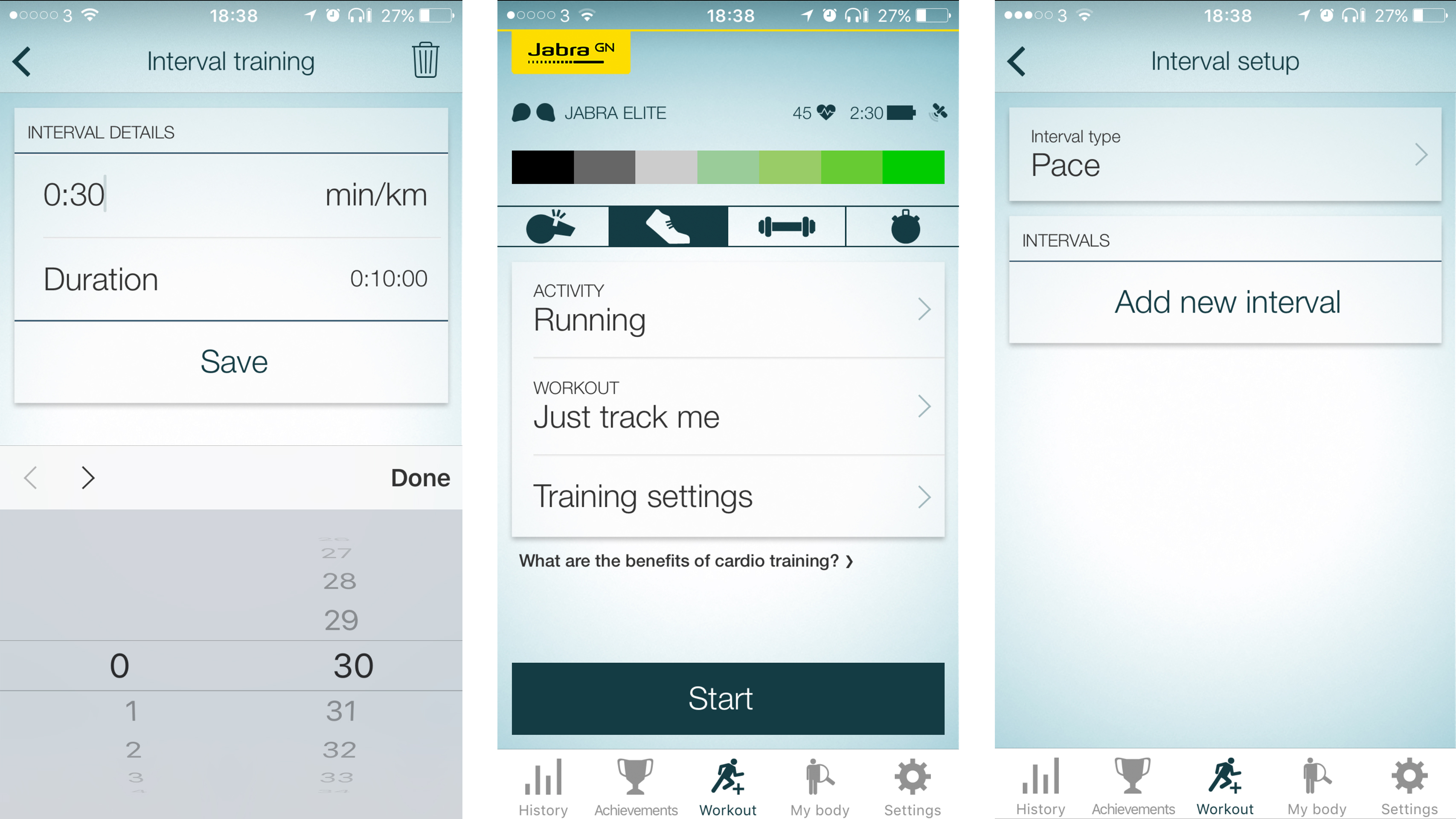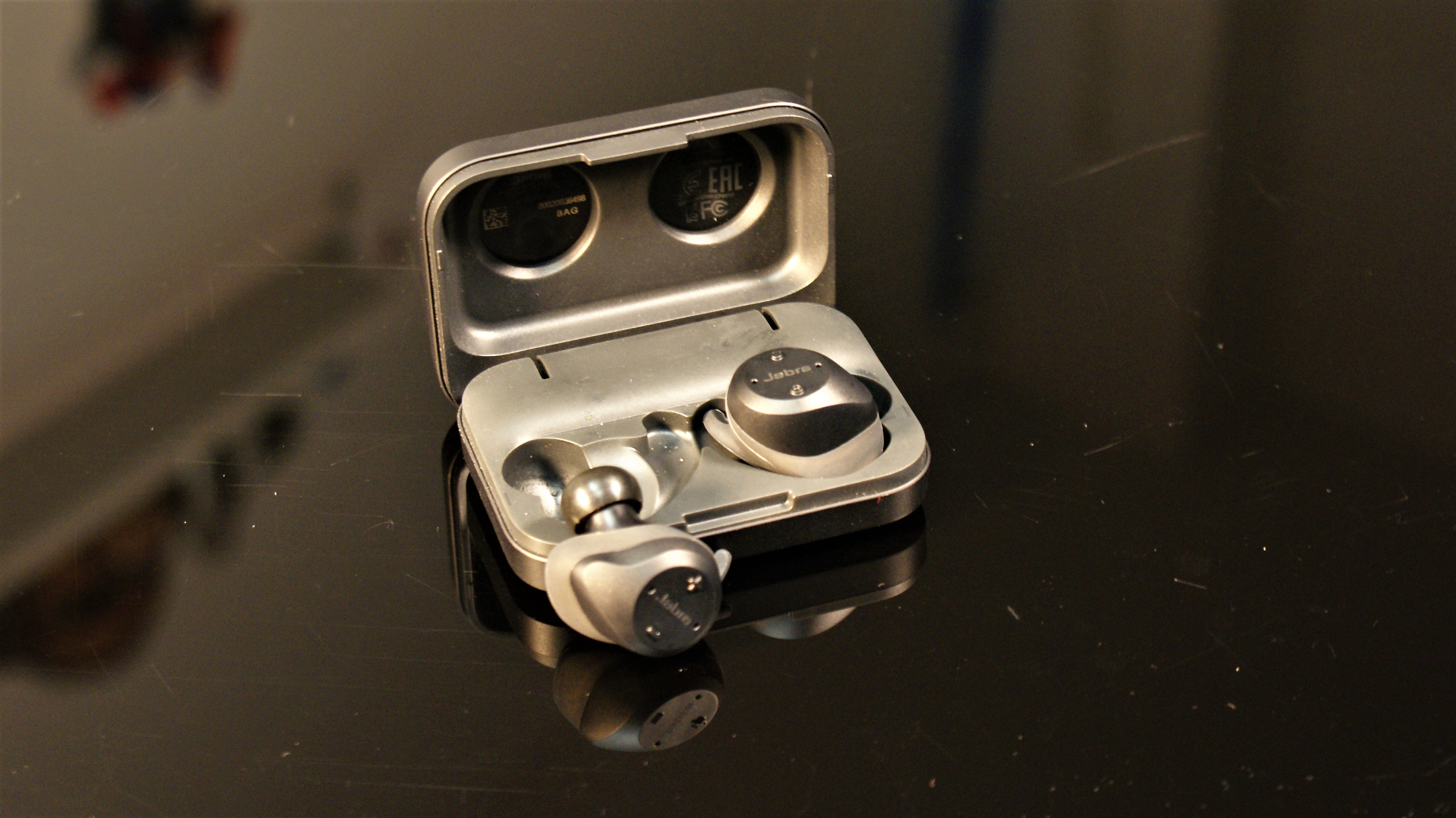Why you can trust TechRadar
Sunday's race went really well – even without music I managed to shave a minute off my five-mile time. However, it's left me feeling terribly tired, and I decided to take Monday off running and cross-training to play football instead.
Even still, I've woken up today (Tuesday) and I'm shattered still. While football isn't as taxing in terms of outright endurance, it's using muscles that aren't required for running so I'm feeling all kinds of stiffness now.
But, dear reader, I am nothing but dedicated to this cause, so I decided that it was time to take on the hardest cross-fit test the Jabra app had to offer.
I tapped the Bodyweight Challenge, which needed no equipment but promised me 20 minutes of pain through five circuits.
Dear lord, it hurt. The mix of burpees, press-ups, squats and crunches, followed by star jumps, left me gasping for air at the end of each session. It wasn't pleasant. I was also robbed of my promised 30 seconds rest at the end of each circuit, the app flinging me into the next exercise before my tears had time to hit my carpet.
Having to press the button to start each exercise is a really annoying feature. I get that it allows you to get ready at your own pace, and set yourself into the correct posture before beginning the workout, but it meant that I could sneak a little rest in between the reps before I summoned the will to press the button.
I don't think I'm alone in being weak-willed when the exercises hurt, so if this app is to be a properly decent personal trainer it should simply give me a few seconds before starting the new exercise, rather than letting me choose.
I also don't like how much the app judges me, as when I'm going through an exercise it'll chime in, telling me to press the button to start the next set of squats/lunges/whatever, the digital equivalent of drumming its fingers on the wall while it waits for me to catch up.
Workout finished, and I felt good for making it through all the circuits... except for the pounding headache. I never get neuralgia from exercise, so I can only assume it's the tight fit of the buds and the changes in blood pressure from all the burpees that's causing it – removing the headphones and resting for a few minutes seems to reduce the issue.
The day isn't over though, so I’ve wobbled into work with a 10K run to do. Looking ahead to the rest of my week, I'm not going to have a chance to do a harder run, and I really want to try the interval settings on these headphones... so I decide to do what you're not supposed to, and run hard when tired.

A runner's nightmare
Don't try this run at home, kids. Listen to your body and you'll recover better... and mine was just screaming like a baby seagull desperate for attention.
I decided to go for a high-volume, short-rep workout, but there was nothing on the app pre-loaded that I could do. I'd have to set it up myself.
It seemed pretty straightforward: choose your time / distance, and decide what to measure against: heart rate zone, pace or just simple tracking. I decided to go for heart rate and 15 sets of 400-meter runs at a high heart rate, with 200-meter cool-downs in between.
There was no option to add in a warm-up (bad Jabra – always encourage users to warm up before starting an exercise), so I just added a set to run for a kilometer before beginning the reps.
Here’s the bad news: you can’t just set steps in the exercise to repeat, like most apps allow for interval running. So I had to manually set up 30 steps, each taking two screens and five taps… it took ages.
That's ridiculous for an interval session – it's always going to be repeats of something, so come on Jabra, have an option to set how many times you want to do something.
(Update: I've had a moan to Jabra about this, and the people there have promised to have a look to see what can be done about adding in repeats of intervals - it's massively needed).
I also found out some more heartbreaking news at this point: having changed phones for a review, there's no account sync.
So all my VO2 Max data, and therefore information on how well-rested I am, has gone and I've got to start from scratch. It's not a massive issue, as most people will stay with the same phone, but you'll have to work hard to make sure the data copies across if you buy a new handset.
Day 4 verdict
I won't bore you with details of the run – I did it, and it went pretty well. The cues were clear and easy to follow, and the headphones letting me know when I'd reached the correct heart rate zone was useful.
There were a few niggles: when I'd reached the right heart rate zone I was told I'd achieved it two or three times per rep. And, like last time, the heart rate data went a bit wonky about two-thirds of the way through the run, meaning I had to pull out the earbud and make sure it was sitting correctly again.
But I was pleased with my run – I just wished it was much easier to set up, as interval training is a crucial part of a runner’s program, no matter the level.
Current page: Day 4: tough workouts and lost data
Prev Page Day 3: Parkrun Next Page Day 5 and verdict: battery life, training plans and rep counts
Gareth has been part of the consumer technology world in a career spanning three decades. He started life as a staff writer on the fledgling TechRadar, and has grew with the site (primarily as phones, tablets and wearables editor) until becoming Global Editor in Chief in 2018. Gareth has written over 4,000 articles for TechRadar, has contributed expert insight to a number of other publications, chaired panels on zeitgeist technologies, presented at the Gadget Show Live as well as representing the brand on TV and radio for multiple channels including Sky, BBC, ITV and Al-Jazeera. Passionate about fitness, he can bore anyone rigid about stress management, sleep tracking, heart rate variance as well as bemoaning something about the latest iPhone, Galaxy or OLED TV.
